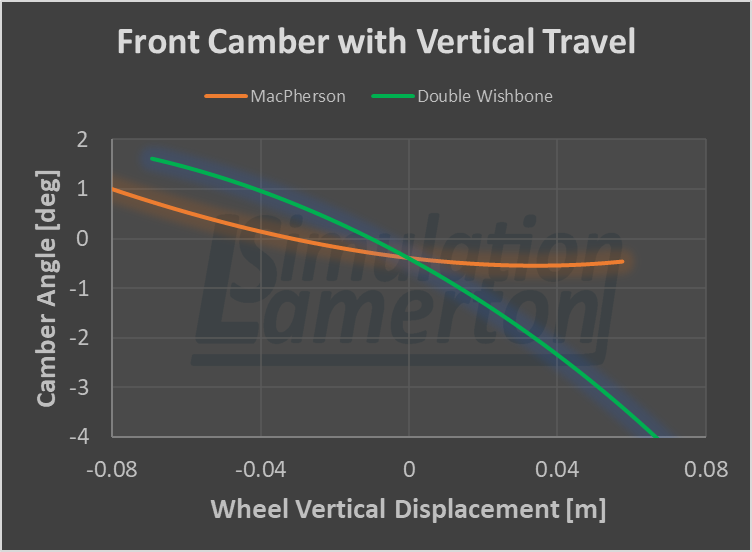Why is Double Wishbone suspension better than MacPherson strut?
The predominant reason is improved camber compension for vehicle dynamics performance, a comparison of kinematic camber characteristics is illustrated below.

The graph shows that the camber angle gets far more negative* for double wishbone as the wheel travels upwards into bump (positive wheel travel on the graph) than for the MachPerson strut suspension. During vehicle cornering the outside wheel will typically go into bump and the inside into rebound. As a result the inside wheel gets more negative in camber but the outside wheel gets more positive in camber due to the vehicle body roll that results from lateral acceleration.
So, why does this matter? The answer is due to tyre forces. Typically a more negatively* cambered tyre will produce more lateral force due to camber thrust and hence corner more quickly for a given condition. This is especially important for the outside tyre at higher lateral acceleration as the higher vertical load on the tyre makes it's camber effect more significant than that of the inside tyre. Note that active suspension systems can be designed to combat this behaviour and in some cases eliminate it entirely.
How can I get data like this for my suspension system?
The graph above was generated using Lamerton Simulation Ltd's MacPherson strut and Double Wishbone kinematic models. Check out those pages and contact us if you have any questions.
Did you find this page useful?
Contact us to find out more at: info@lamertonsimulation.com
or buy us a coffee to help us generate more useful pages like this:
* Camber direction described as per the SAE definition.
